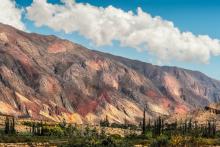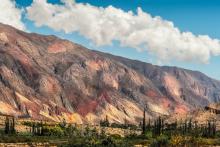ASX-listed explorer, Oakdale Resources, has kicked off a maiden aircore drilling program at its Gibraltar halloysite-kaolin project on SA’s Eyre Peninsula aimed at confirming the extent of the mineralisation that was detected by historic shallow drilling. The company plans to drill 50 holes totalling an estimated 2,500m over its target area 15km north of Andromeda Metals’ Mount Hope kaolin-halloysite project.


ASX-listed explorer, Oakdale Resources, has flipped the switch on an aircore drilling program at its Gibraltar halloysite-kaolin project on South Australia’s Eyre Peninsula. Its maiden round of drilling at Gibraltar is aimed at confirming the extent of a kaolinitic clay and halloysite occurrence that was detected by historic shallow drilling.
The Perth-based company plans to drill 50 holes totalling an estimated 2,500m over its target area roughly 15km north of the Mount Hope kaolin-halloysite project owned by Andromeda Metals.
Oakdale anticipates wrapping up the initial round of drilling quite swiftly given the near-surface nature of the Gibraltar halloysite-kaolin mineralisation.
It will also deploy portable in-field spectral analysis to expedite the identification of clay minerals, including kaolinite and halloysite in the individual drill samples, that will assist in the collection of composite samples for laboratory analysis.
In the event of early encouragement from the field work, Oakdale can elect to extend the drilling campaign under existing approvals.
An east-west traverse of shallow auger drilling undertaken by Monax Mining in 2007 across the Gibraltar tenement encountered highly weathered granitic basement lithologies.
Geological records of multiple holes from the historic drill program indicate moderate thicknesses of kaolin mineralisation close to surface, with both kaolinite and halloysite picked up in an analysis of drill samples.
According to Oakdale, the occurrence sits on a north-south trending weak magnetic feature seen in the regional magnetics that can be traced south to Andromeda’s Mount Hope project.
Andromeda recently released an updated inferred mineral resource estimate for Mount Hope of 18 million tonnes of bright white kaolinised granite yielding 7.5 million tonnes of minus 45-micron quality kaolin product.
Oakdale Resources Chairman, Chris Gale said: “The Gibraltar project represents a compelling target for Oakdale, with historic work indicating the presence of the high-value halloysite and kaolin minerals.”
“There is a stable and strong global demand across a range of applications for both high-grade kaolin and the more unique form of halloysite.”
Halloysite has a variety of industrial uses beyond kaolin and commands a significant premium above the average kaolin price.
According to Andromeda, the exhaustion of existing global reserves and the closure of environmentally damaging mines in China have left halloysite in short supply.
Its main applications are in the manufacture of high-quality porcelain by adding whiteness, transparency and strength to the final fired product, and as a petroleum cracking catalyst.
The natural high purity of halloysite-kaolin compared with standard kaolin makes it an attractive premium-quality feed material for the production of high purity alumina.
Andromeda points out that research on the use of halloysite nanotubes for a number of high-tech industries is leading to the development of new markets for the material. The nanotubes can be filled with many materials such as biocides, drugs, proteins and polyelectrolytes.
According to the Adelaide-based company, a substantial portion of the Mount Hope deposit displays exceptionally low iron contaminant within the bright white kaolin content that is rarely found elsewhere in the world.
It says the halloysite levels may also be ideally suited to and offer potential alternative high-value market opportunities – in addition to ceramics – such as in specialist coatings and polymers.
Is your ASX listed company doing something interesting? Contact: matt.birney@businessnews.com.au












